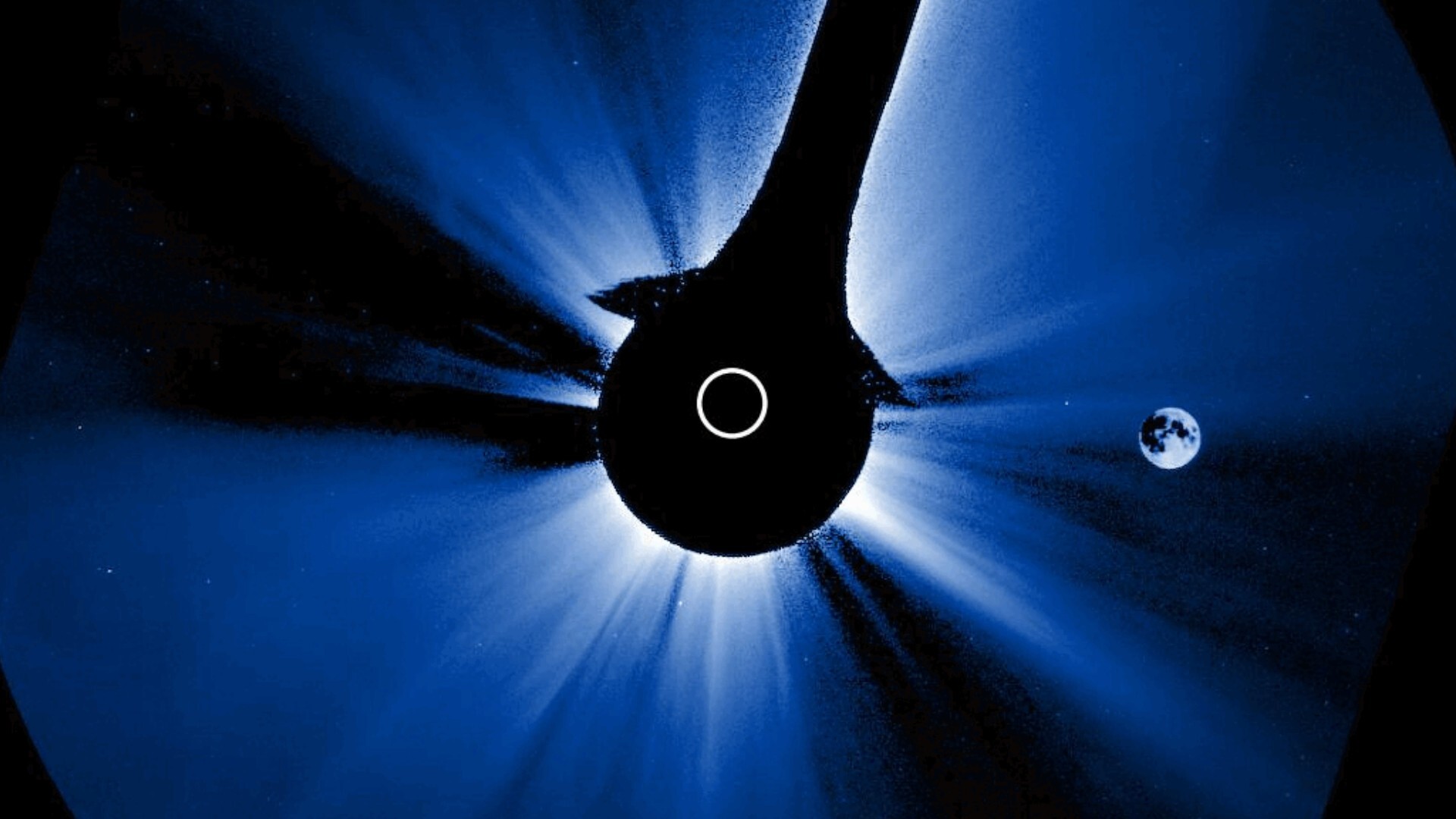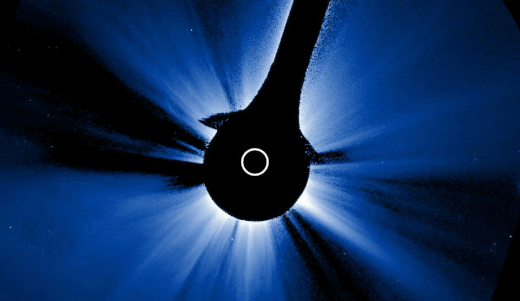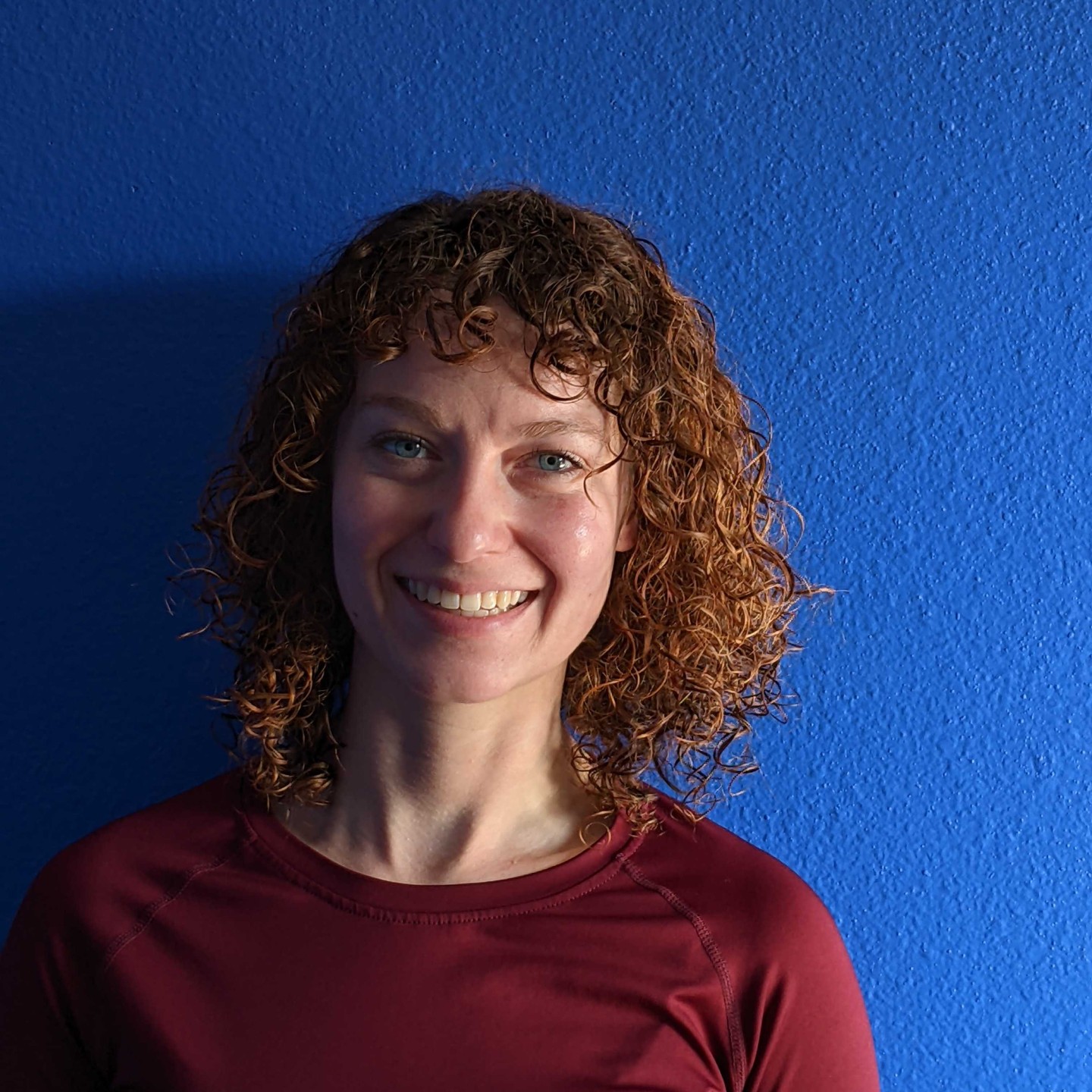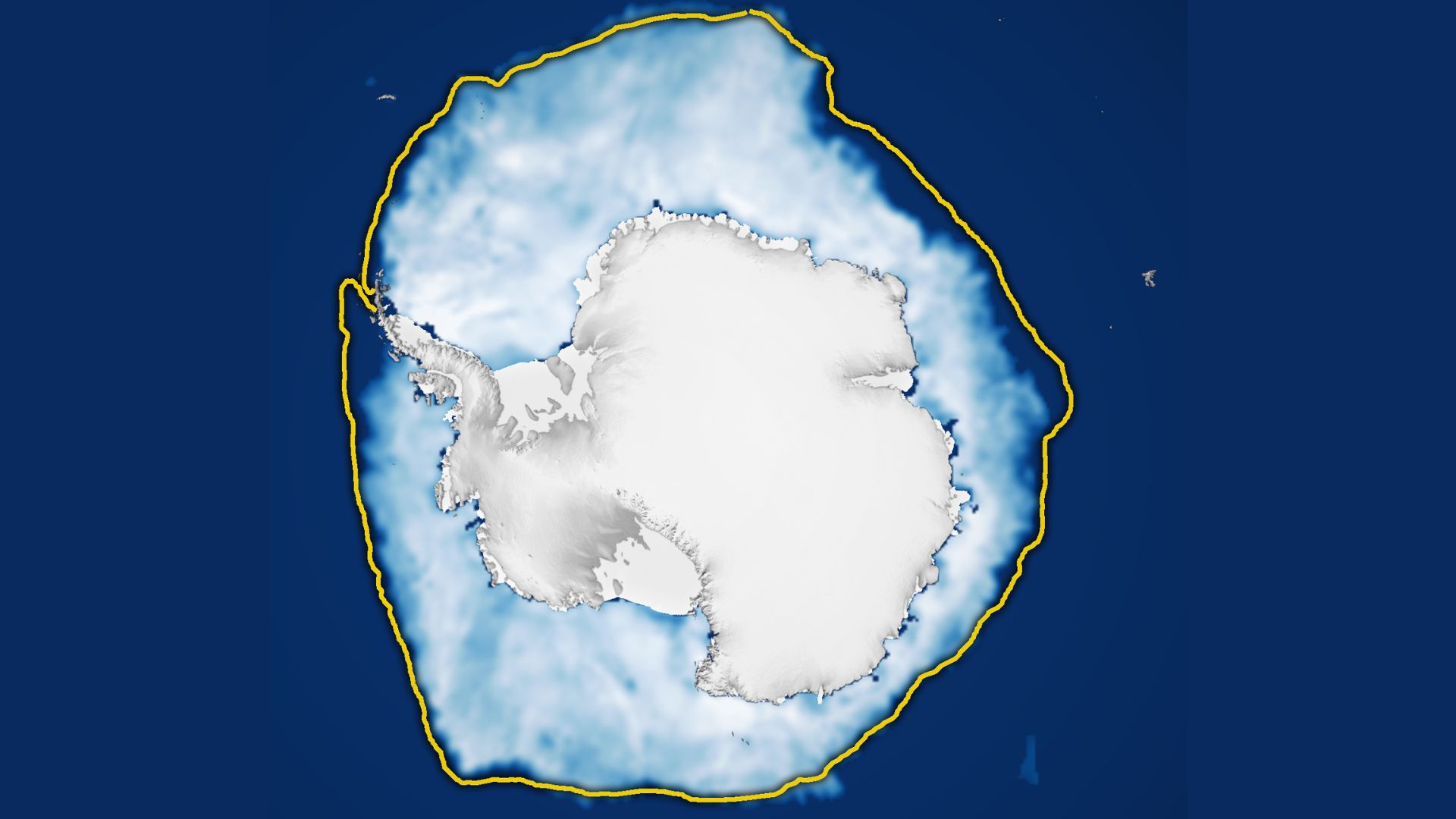Moon photobombs the sun in wild NOAA satellite image | Space photo of the day for Aug. 27, 2025
A coronagraph is used to study the sun, but recently NOAA's instruments caught the moon as well.

To study the sun, scientists use a specialized telescope called a coronagraph. This instrument mimics a solar eclipse by using a occulting disk to block out the sun's bright light. By doing this, astronomers can study the fainter solar atmosphere, the sun's corona, that's hard to see when viewing the entire sun.
However, recently, a coronagraph used by the National Oceanic and Atmospheric Administration (NOAA) caught something extra in their images: the moon.
What is it?
NOAA's Compact Coronagraph-1 (CCOR-1) has a particularly unique vantage point for viewing the sun because it sits on the GOES-19 satellite, which scans the Earth. The CCOR-1 was developed and launched in June 2024 to replace older coronagraphs that, despite still working, have exceeded their life expectancy. NOAA plans to have these types of coronagraphs on future GOES satellites to continue studying the sun.
Where is it?
This photo was taken from geostationary orbit, just above the Earth's equator, as the CCOR-1 is the first coronagraph to be placed there, as opposed to earlier coronagraphs which are farther in space.
Why is it amazing?
While coronagraphs typically study the sun, recently, the CCOR-1 captured something rather special: the moon passing almost directly in front of the sun, appearing within the field of view of the coronagraph. This happens because CCOR-1 orbits closer to Earth than other coronagraphs, meaning the moon will occasionally be seen in its imagery.
While the moon appears almost fully illuminated in the image, it isn't actually a full moon. This brightness comes from Earthshine: sunlight that's reflected from Earth and lighting up the surface of the moon. Because of its high resolution, the CCOR-1 coronagraph could capture this light, making the moon seem full.
Want to learn more?
You can read more about studying the sun and NOAA's other research.
Breaking space news, the latest updates on rocket launches, skywatching events and more!
Kenna Hughes-Castleberry is the Content Manager at Space.com. Formerly, she was the Science Communicator at JILA, a physics research institute. Kenna is also a freelance science journalist. Her beats include quantum technology, AI, animal intelligence, corvids, and cephalopods.
You must confirm your public display name before commenting
Please logout and then login again, you will then be prompted to enter your display name.


